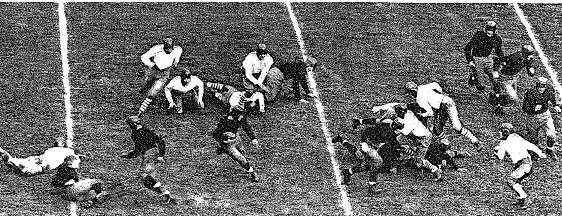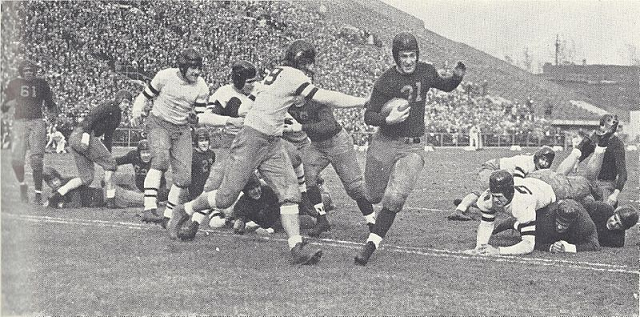
Pictured above is Michigan halfback Herman Everhardus, the Big 10's leading scorer, adding to his total at Chicago. Michigan was tied late in the season by 4-0-4 Minnesota, but they stretched their unbeaten streak to 18 games with a 7-0-1 finish, and they were and are the consensus choice for mythical national champion (MNC) of 1933. They had gone 8-0 and shared an MNC with 10-0 Southern Cal in 1932, and they had contended for a great many MNCs going back to 1901, but 1933 was the first season in history when Michigan would have been likely to finish #1 in an AP poll had there been one.

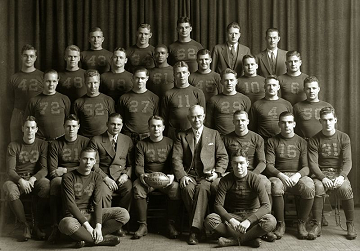
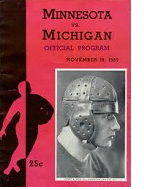 Minnesota
was a strange beast. They'd tied a pair of 1-5-2 teams, Northwestern
and Indiana, but they'd also tied 6-1-1 Purdue, and they'd given 8-1
Pittsburgh their only loss. Erratic, but clearly dangerous. This game
attracted a crowd of 65,000 in Ann Arbor, 28,000 fewer than had
attended the Ohio State game. What they saw was dismaying, as Minnesota
thoroughly dominated, and Michigan produced almost no offense at all.
Still, the Wolverines held on for a 0-0 tie, and given how hapless
their offense was, I'd call that a happy ending.
Minnesota
was a strange beast. They'd tied a pair of 1-5-2 teams, Northwestern
and Indiana, but they'd also tied 6-1-1 Purdue, and they'd given 8-1
Pittsburgh their only loss. Erratic, but clearly dangerous. This game
attracted a crowd of 65,000 in Ann Arbor, 28,000 fewer than had
attended the Ohio State game. What they saw was dismaying, as Minnesota
thoroughly dominated, and Michigan produced almost no offense at all.
Still, the Wolverines held on for a 0-0 tie, and given how hapless
their offense was, I'd call that a happy ending.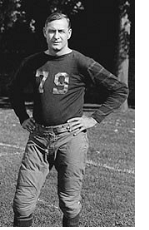 Princeton has been
retroactively selected as the mythical national champion of 20 seasons in
the 1800s, edging out Yale for the most, and the school claims them
all. In the 20th century, Princeton won national championships in 1903, 1906, and 1922, and the school claims another two for 1911 and 1920, though I disagree with both of those claims.
Princeton has been
retroactively selected as the mythical national champion of 20 seasons in
the 1800s, edging out Yale for the most, and the school claims them
all. In the 20th century, Princeton won national championships in 1903, 1906, and 1922, and the school claims another two for 1911 and 1920, though I disagree with both of those claims.